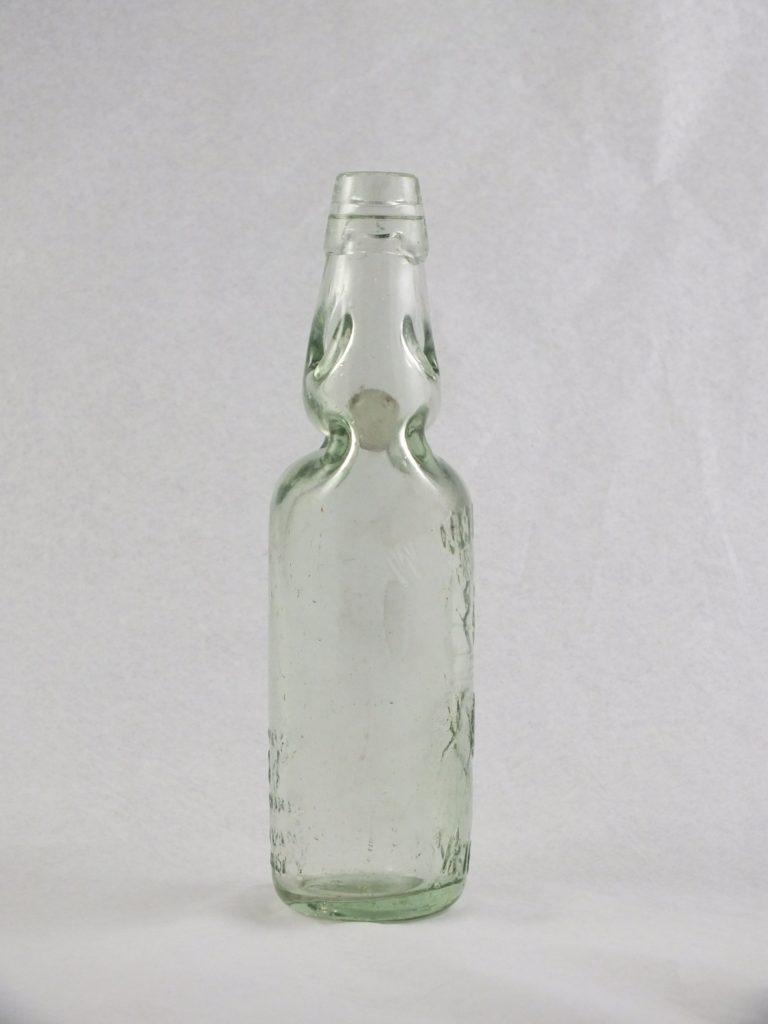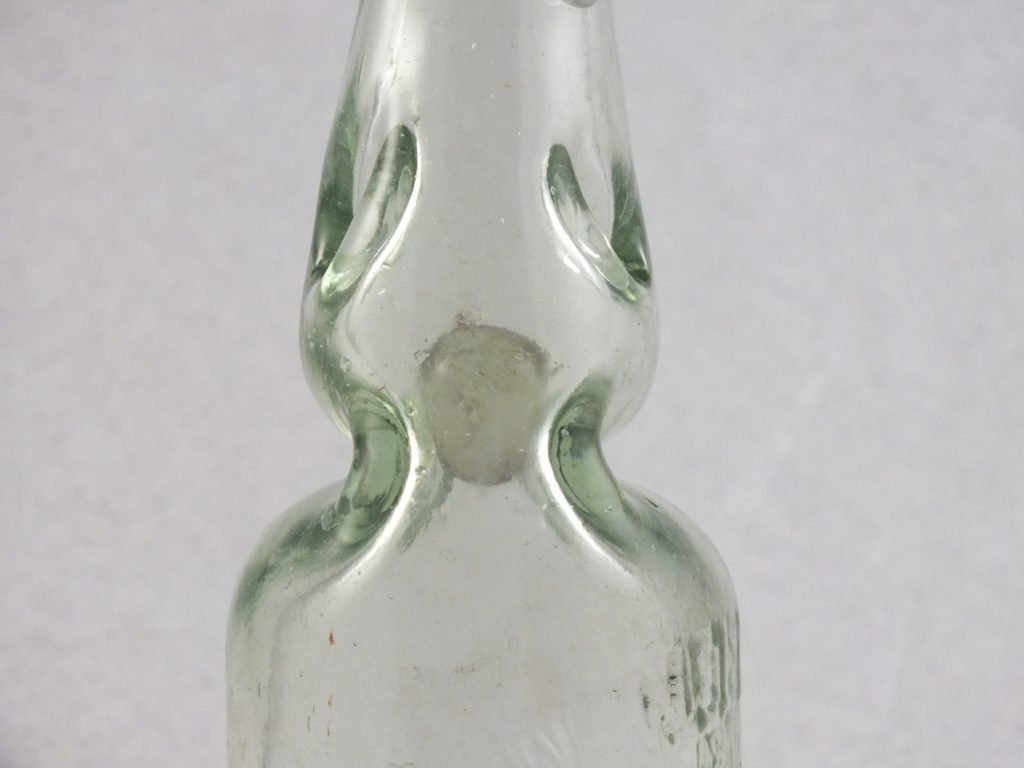Codd Bottles in Ontario Archaeology

 The latest issue of KEWA features an article by TMHC’s Alexandra Kisielewski about a glass bottle. Now before you retort about how common glass bottles are or how many you have in your recycling at this moment, appreciate that this isn’t just any glass bottle, it’s a Codd bottle. That seemingly extra ‘d’ isn’t a typo either.
The latest issue of KEWA features an article by TMHC’s Alexandra Kisielewski about a glass bottle. Now before you retort about how common glass bottles are or how many you have in your recycling at this moment, appreciate that this isn’t just any glass bottle, it’s a Codd bottle. That seemingly extra ‘d’ isn’t a typo either.
In the late 19th century, Hiram Codd of London (the other one), was a mechanical engineer for a cork company. Either frustrated by cork’s tendency to pop open when used to contain carbonated drinks, or out a tremendous amount of spite for his employer, perhaps both, Codd patented a bottle design that sealed using a glass marble and rubber gasket. The combination resulted in a unique visual and auditory experience.
The Codd Bottle signature cavity for containing the marble effected the sound characteristics of a glass rattle when empty.
Alexandra’s research stems from a Codd Bottle discovered during the Armoury Block excavations TMHC conducted in the former St. John’s Ward (The Ward) neighbourhood of Toronto. From this single example, she explores the rich history of the bottle through British heyday and attempts to break into the competitive North American market.
Although the Codd Bottle is a rare find in Canadian archaeology, replaced by removable seals like the bottle cap, it is still manufactured today as the iconic Japanese Ramune bottle.
Check out the full article here. (reproduced with permission)

